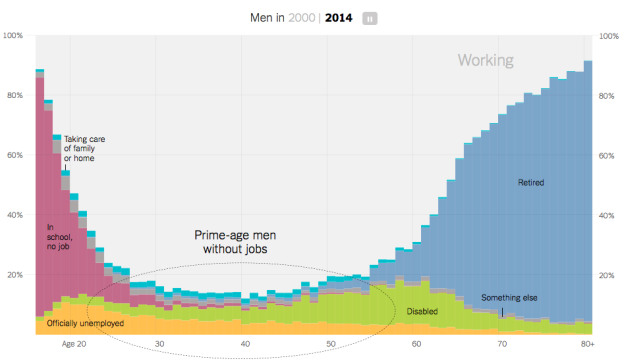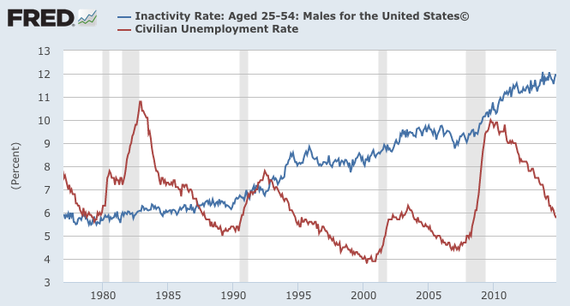U.S. – The rise of Men who don’t work..
Variations on a theme:
Some great work from Amanda Cox at the New York Times looking at US Labour Markets:
At every age, the chances of not working have changed in the last 15 years. Teenagers are far more likely not to work. Older people are retiring later and working more. In the ages in between — the periods of life when most people work — the changes have been smaller, but they are still substantial.

In the late 1960s, almost all men between the ages of 25 and 54 went to work. Only about 5 out of every 100 did not have a job in any given week. By 2000, this figure had more than doubled, to 11 out of every 100 men. This year, it’s 16. (People in the military, prison and institutions are excluded from these figures.)
This from the Atlantic:
In 1974, the radio broadcaster Studs Terkel published a book of profiles to have “people talk about what they do all day and how they feel about what they do.” The title of the book was, simply, Working.

That was appropriate. Working was what people did all day, particularly if they were men in their 20s, 30s, 40s, or 50s. In the 1970s, as in previous decades, about 95 percent of men between the age of 25 and 54 were either working or actively looking for their next job. Only 5.5 percent of them were what economists consider “inactive”—out of the labor force.
But somebody revisiting Terkel’s project in the next decade would be encouraged to find a more flexible title. In each decade since the 1970s, the inactivity rate for 25-54-year-old men—the share of guys neither working nor actively seeking a job—has gone up. Each decade, not working becomes more and more a part of what we’re doing all day.
Links:
- Rise of Men who don’t work – New York TImes
- The Mysterious Rise of the Non-Working Man – The Atlantic


